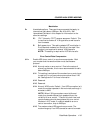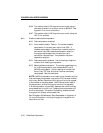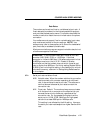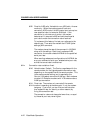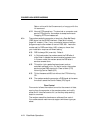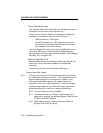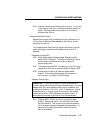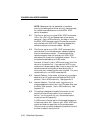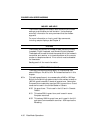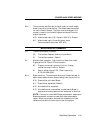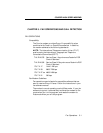
COURIER HIGH SPEED MODEMS
4-26 Data Mode Operations
Transmit Data Buffer Sizes
The Transmit Data refers to the data from the computer, which
the modem is to transmit over the phone line.
The size of the Transmit data buffer depends on whether the
connection is under error control or not, as follows.
• ARQ connections: 3.25K bytes.
• Non-ARQ connections: 1.5K bytes, allowing use of
error control file transfer protocols such as Xmodem
and Ymodem without flow control.
If bit 3 of Register S15 is turned on, the non-ARQ buffer size is
reduced to 128 bytes, for the convenience of BBS operators
taking calls from remote users of slower modems. See S-Register
Summary, S15, in Appendix B.
Received Data Buffer Size
Received Data refers to the data the modem receives over the
phone link, which the modem passes on to the attached
computer.
The size of this buffer remains constant at 2K bytes.
Transmit Data Flow Control
&Hn This type of flow control is for data transmitted to the modem
by its attached computer or terminal. The modem monitors its
buffer as data comes from the computer or modem. If the
buffer approaches 90% capacity, the modem signals the
computer or terminal to stop transmitting. When the modem
has sent enough data over the link to half empty the buffer, it
signals the computer or terminal to resume transmitting.
&H0 Transmit Data flow control disabled.
&H1 Hardware flow control. Default. Requires that your
computer or terminal and software support Clear to Send
(CTS) at the RS-232 interface.
&H2 Software flow control. Requires that your software
support XON/XOFF signaling.




